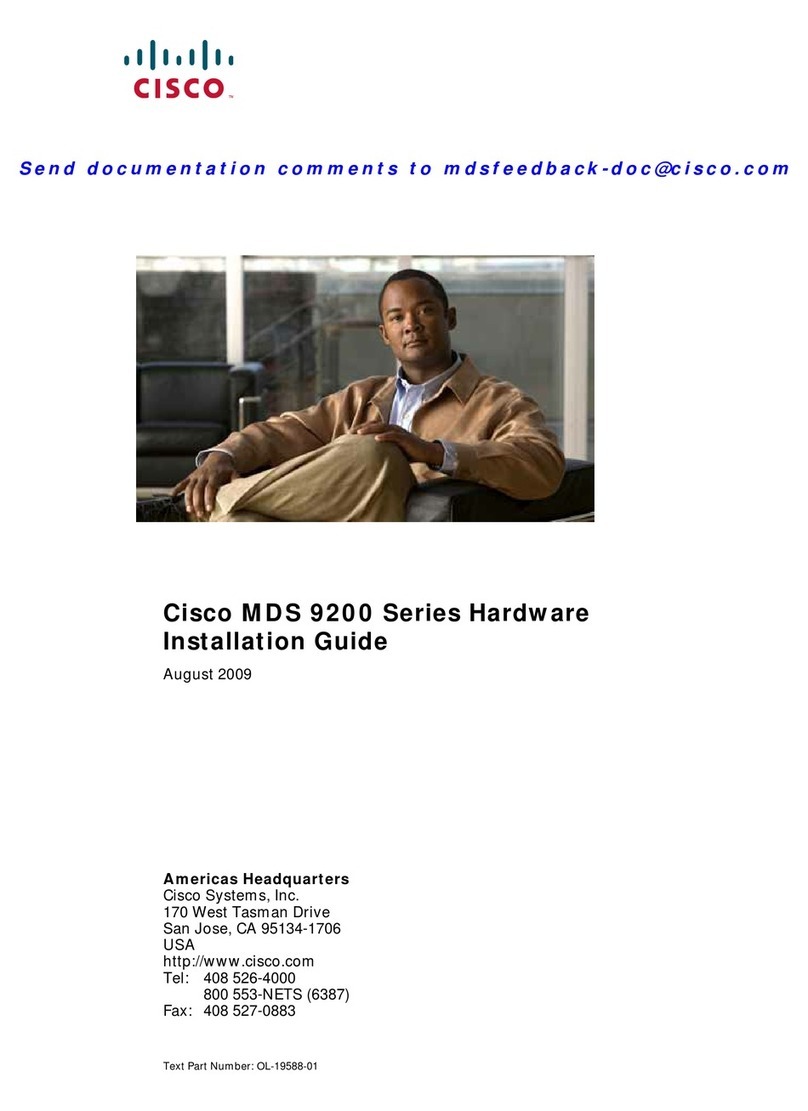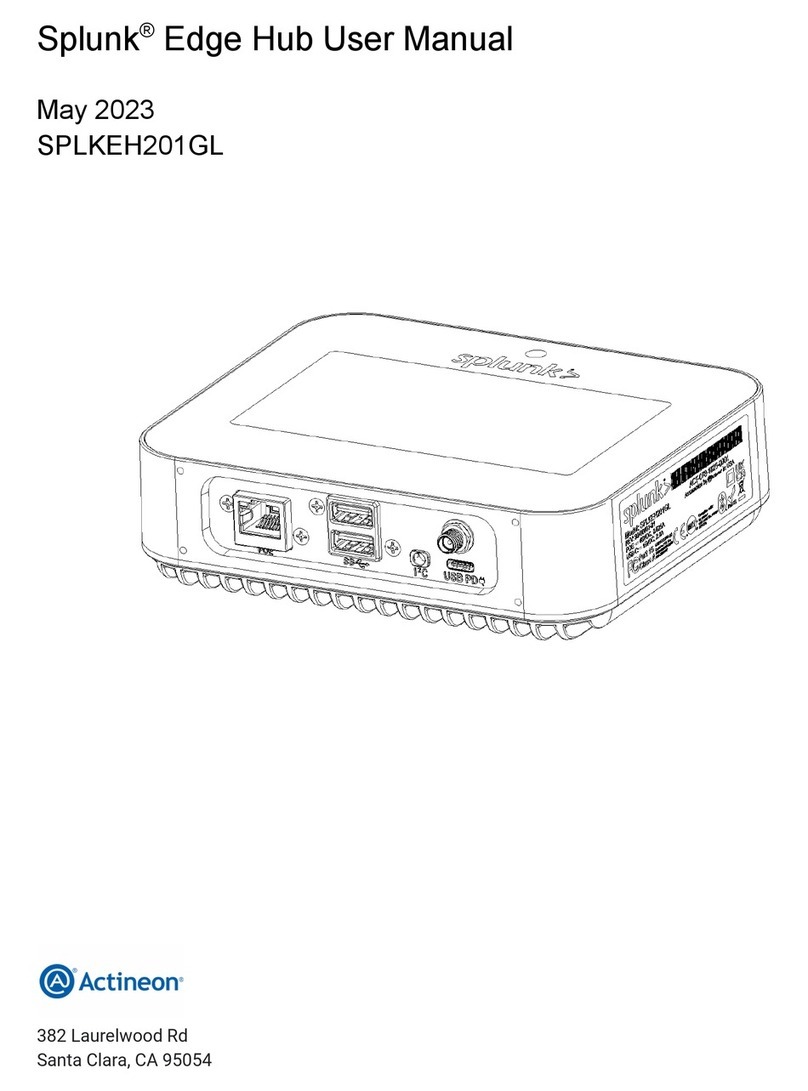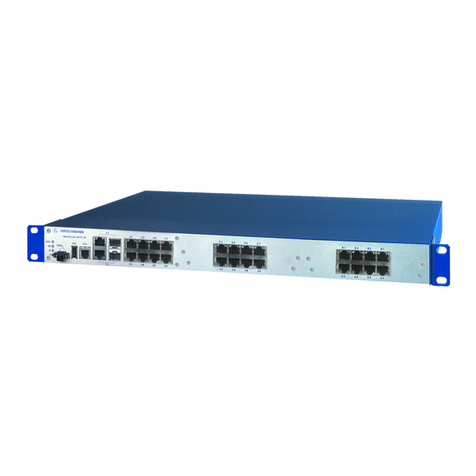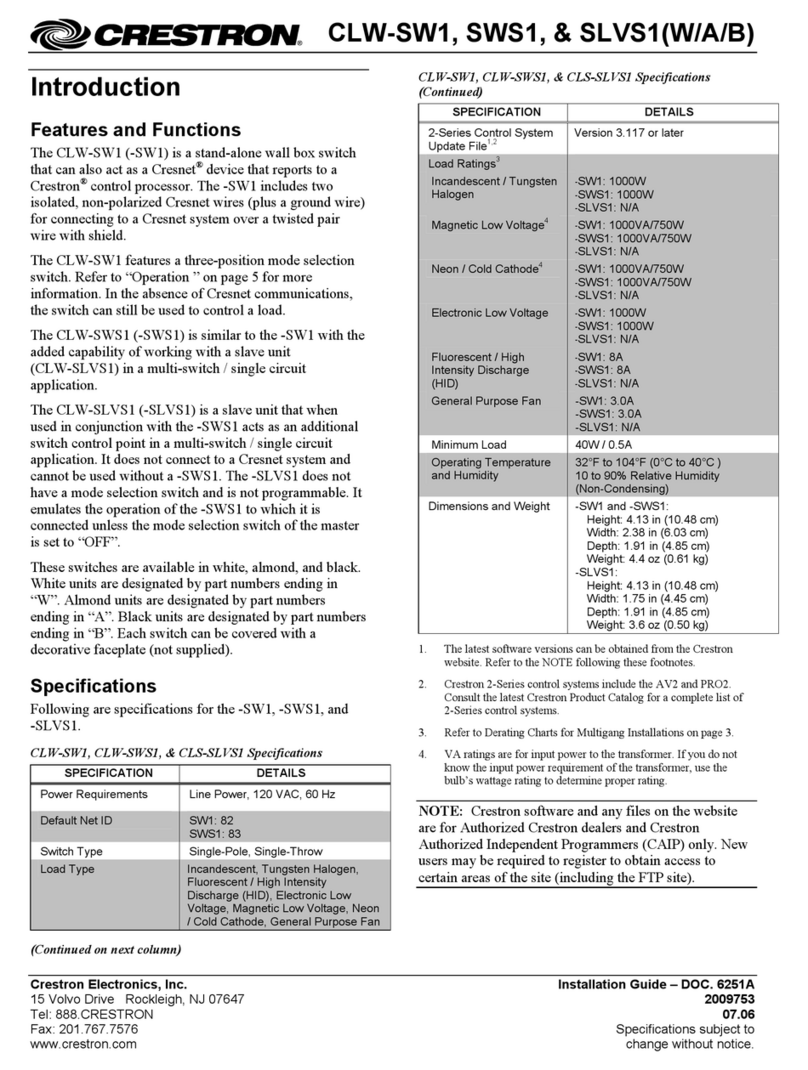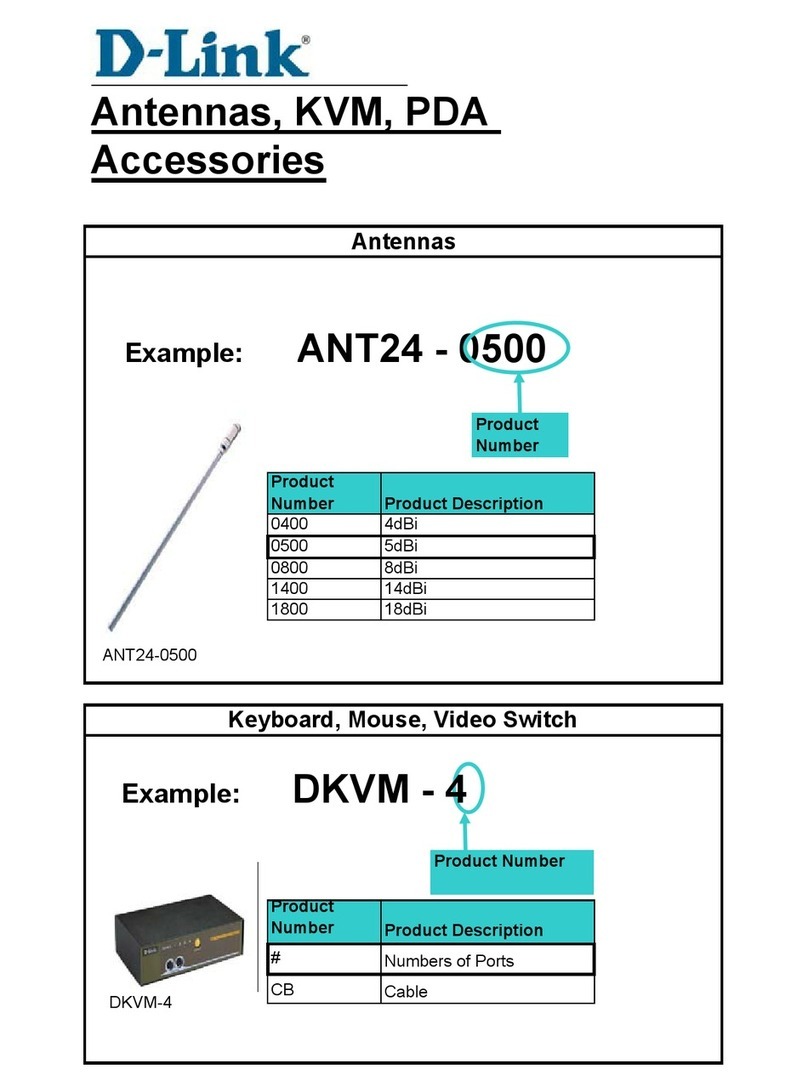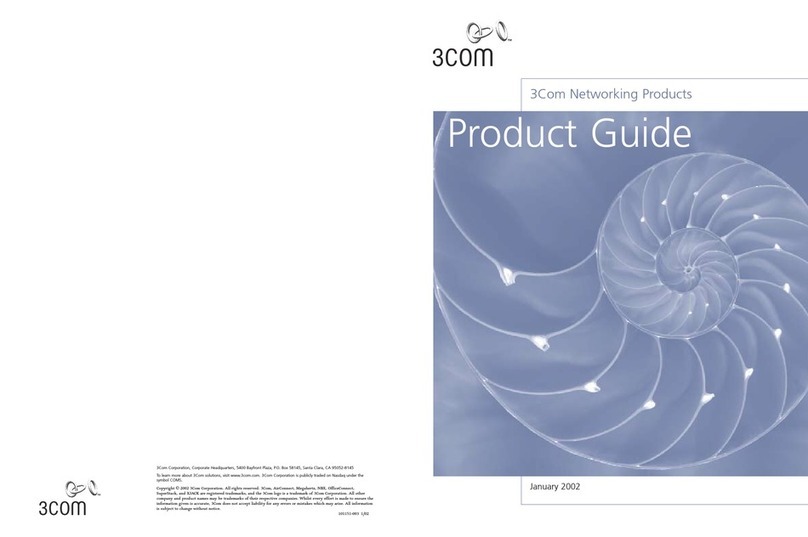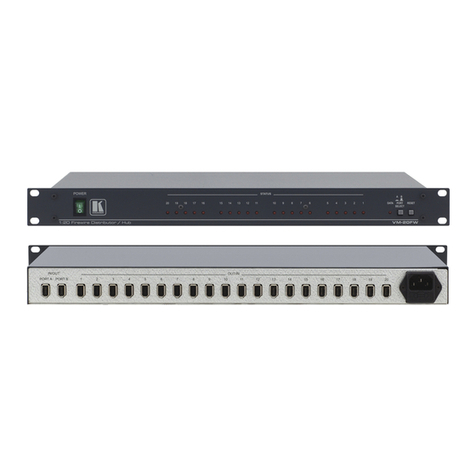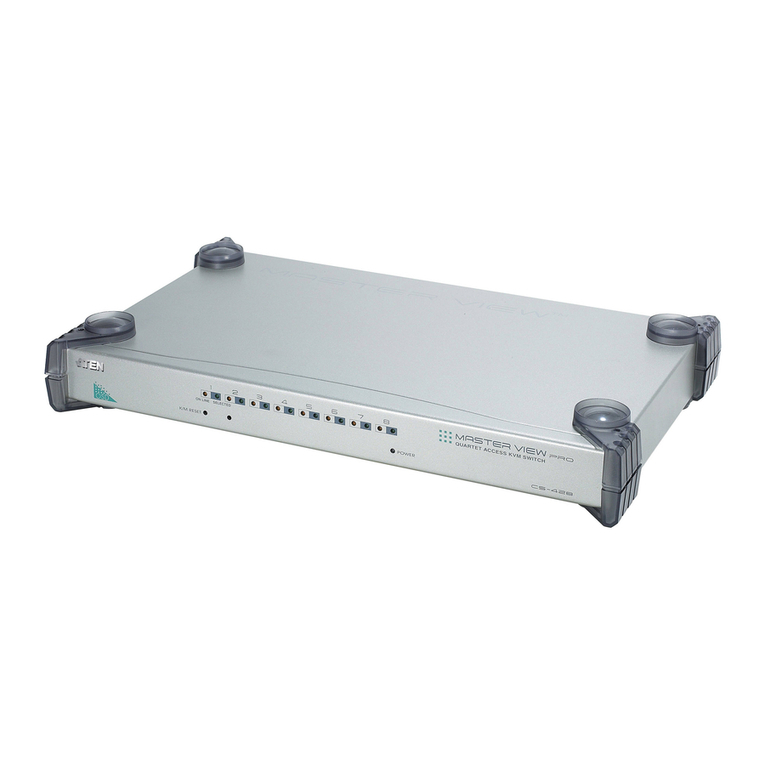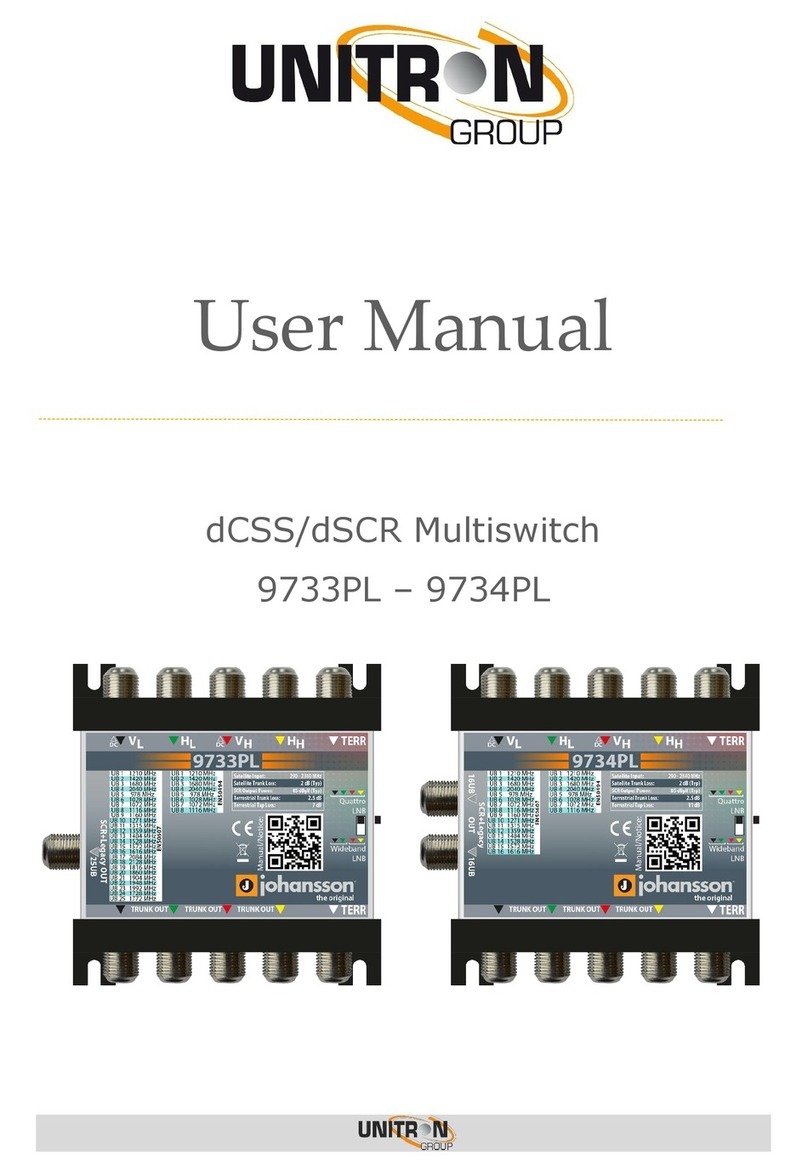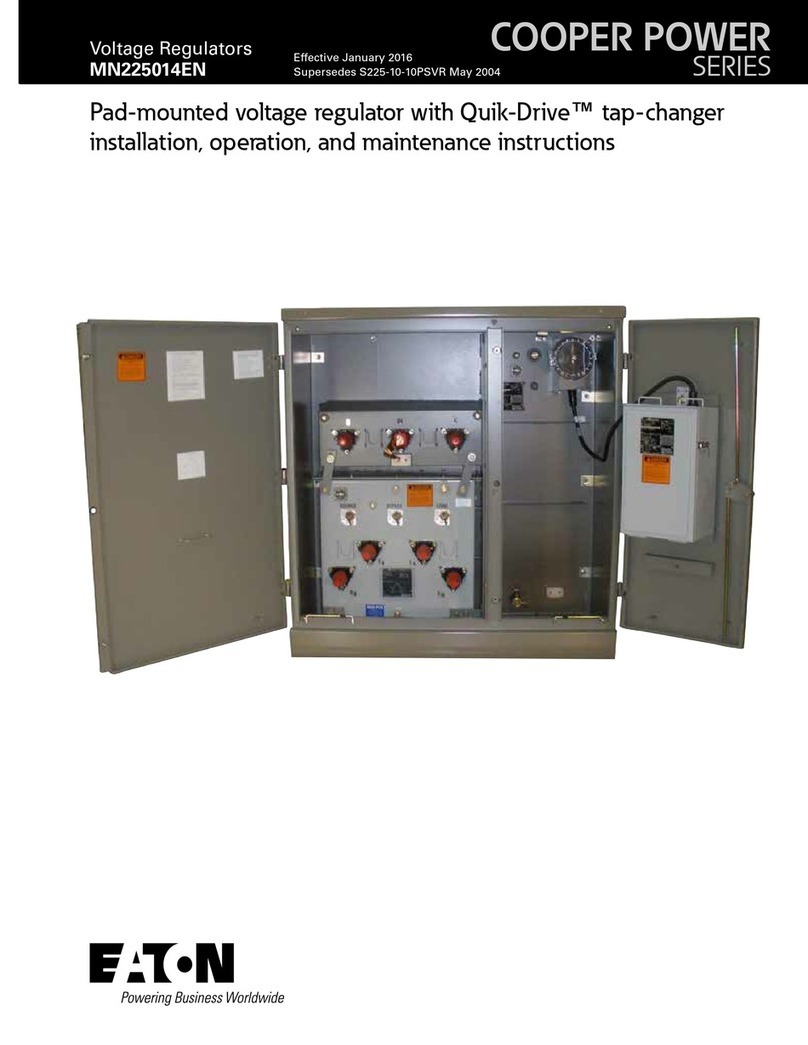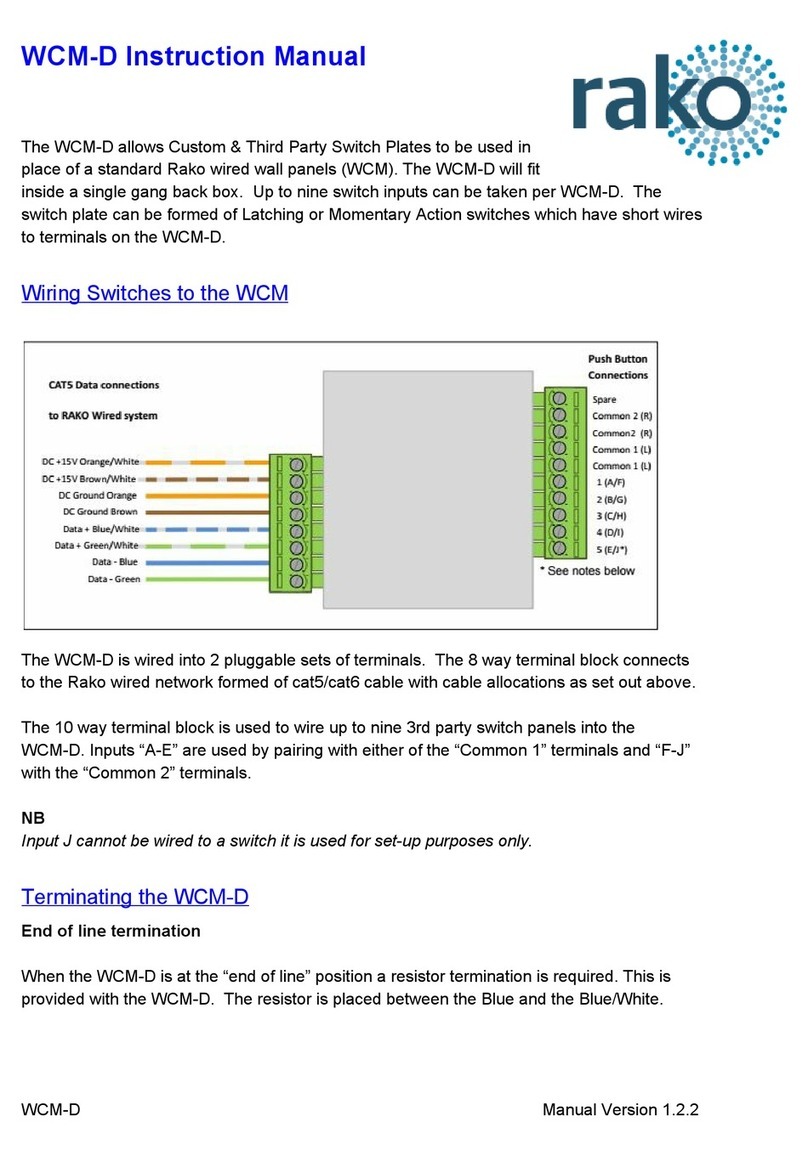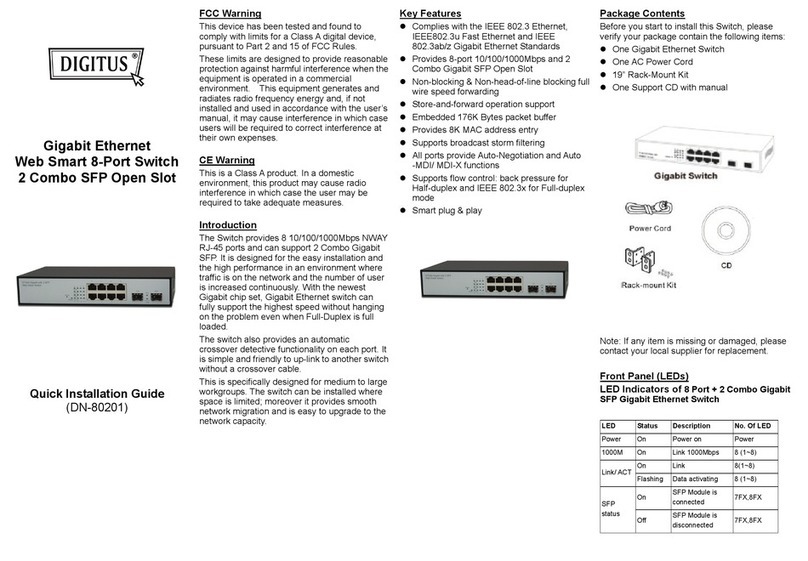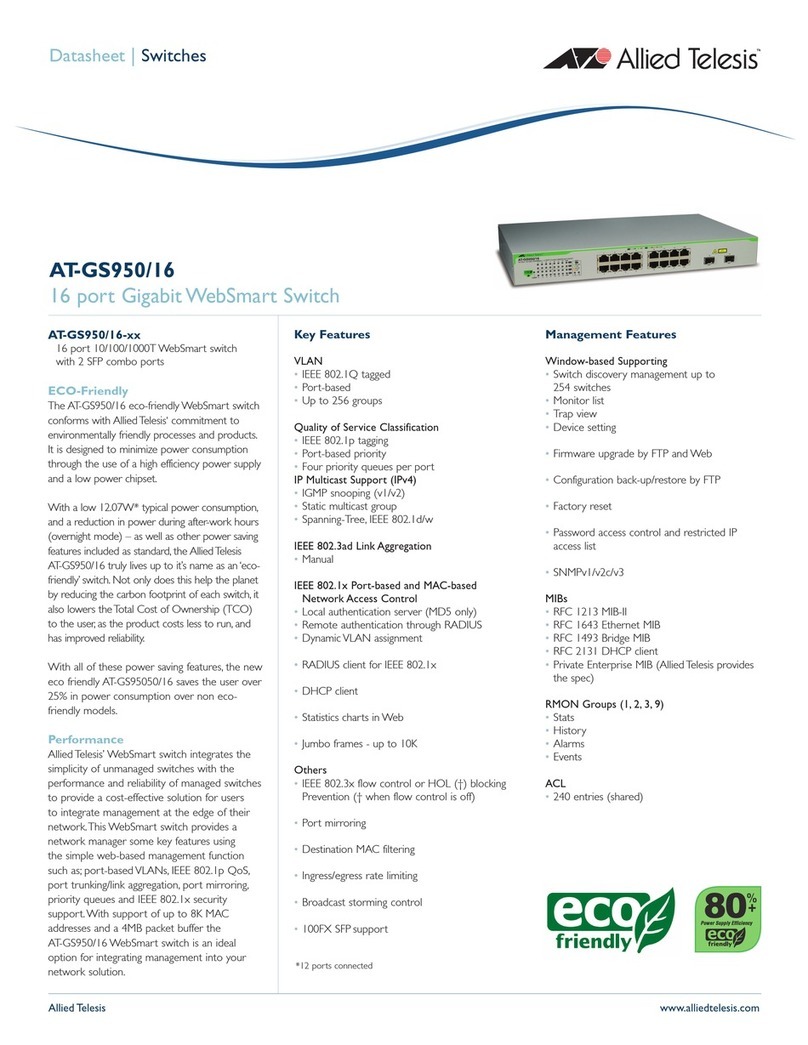Nimbra 300 Series Manual

Installation and Maintenance Manual
Nimbra 300 Series

Copyright 2005-2006 by Net Insight AB, Sweden. All rights reserved. This document may not be
reproduced in whole or in part without the expressed written permission of Net Insight AB.
The specifications and information in this document are provided “as is” and are subject to change
without notice. All statements, information, and recommendations in this document are provided
without warranty of any kind, expressed or implied, including without limitation any warranty
concerning the accuracy, adequacy, or completeness of such specifications and information or the
result to be obtained from using such specifications or information. Net Insight AB shall not be
responsible for any claims attributable to errors, omissions, or other inaccuracies in the
specifications or information in this document, and in no event shall Net Insight AB be liable for
direct, indirect, special, consequential or incidental damages arising out of the use or inability to
use this document.
If you would like a copy of the GPL source code in this product on a CD, please send a mail to
Net Insight and Nimbra are trademarks of Net Insight AB, Sweden. All other trademarks are the
property of their respective owners.
Net Insight AB
Box 42093
SE-126 14 Stockholm
Sweden
Phone: +46 8 685 04 00
Fax: +46 8 685 04 20
E-mail: info@netinsight.net
March, 2007
Stockholm, Sweden
Textpartnumber: NGP0024-EA01/C2
NID2473C2

Installation and Maintenance Manual Nimbra 300 Series Contents •i
©2006 Net Insight AB, All rights reserved
Contents
About This Manual 5
Overview..............................................................................................................................5
Intended Reader...................................................................................................................5
Support and Assistance........................................................................................................5
Organization of Content.......................................................................................................5
Conventions in This Manual................................................................................................6
Information of Specific Importance.......................................................................6
Instructions............................................................................................................6
Terminal Output and Keyboard Input....................................................................6
Product Overview 7
General.................................................................................................................................7
Hardware Overview, Nimbra 300 Series.............................................................................9
Trunk Modules...................................................................................................................13
OC-48/STM-16 X-ADM Trunk Module.............................................................14
4 x OC-3/STM-1 Trunk Module .........................................................................15
OC-12/STM-4 Trunk Module .............................................................................16
2 x OC-12/STM-4 Trunk Module........................................................................17
4 x DS3/E3 Trunk Module ..................................................................................18
1 Gbps Optical Trunk Module, SH and LH.........................................................19
Access Modules.................................................................................................................21
E1 Access Modules .............................................................................................22
T1 Access Module...............................................................................................22
Fast Ethernet Access Module ..............................................................................23
Gigabit Ethernet Access Module.........................................................................24
4 x OC-3/STM-1 Access Module........................................................................25
SDI Video Access Module..................................................................................26
ASI Transport Access Module (6 ports)..............................................................27
8 x ASI Transport Access Module.......................................................................28
8 x AES/EBU Access Module.............................................................................29
Transceiver Modules..........................................................................................................30
Introduction .........................................................................................................30
SFPs for OC-3/STM-1 ports................................................................................30
SFPs for OC-12/STM-4 ports..............................................................................31
SFPs for Gigabit Ethernet ports...........................................................................31
SFPs for OC-48/STM-16 ports............................................................................31
Multirate CWDM SFPs.......................................................................................31
Installation 33
Unpacking and Inspection .................................................................................................33
Installation Requirements ..................................................................................................33
Mechanical Requirements ...................................................................................33
Environmental Requirements ..............................................................................33
Air-flow...............................................................................................................34
Power Requirements............................................................................................34
Ferrite clamp........................................................................................................35
Grounding Procedures .......................................................................................................36

ii •Contents Installation and Maintenance Manual Nimbra 300 Series
©2006 Net Insight AB, All rights reserved
Protective device................................................................................................. 36
Power Requirements........................................................................................... 36
Connecting and Powering Up the Nimbra 300 Series Switch........................................... 37
Installing SFP-Transceivers.............................................................................................. 38
Extracting Transceivers .................................................................................................... 39
Connecting Optical Fibers to the SFP Module.................................................................. 41
The User Interface 43
Overview........................................................................................................................... 43
Connecting to a Nimbra 300 series switch........................................................................ 43
Local Connection, Serial Control Port................................................................ 43
Local Connection, Ethernet Control Port ........................................................... 43
Required Software.............................................................................................. 44
Terminal Connection ........................................................................................................ 44
Ethernet Control Port.......................................................................................... 44
Serial Control Port.............................................................................................. 44
Initial Software Installation 45
Overview........................................................................................................................... 45
Required Information........................................................................................................ 45
Setting Initial Parameters.................................................................................................. 46
Log In Over the Serial Connection..................................................................... 46
Setting the IP Address and Netmask................................................................... 46
Gateway Setup.................................................................................................... 47
Changing Password ............................................................................................ 47
Setting the DTM Address................................................................................... 47
Backup the Registry Setting ............................................................................... 48
Restart................................................................................................................. 48
Loading the Configuration Settings.................................................................................. 48
Remote Software Upgrade................................................................................................ 49
Loading the Configuration Settings.................................................................................. 49
Starting a Nimbra 300 Series Switch for the First Time................................................... 49
Connecting a Nimbra 300 Series switch series element to the Network ............ 50
Powering Up a Nimbra 300 series switch........................................................... 50
Hardware Maintenance 51
General.............................................................................................................................. 51
Removing and Replacing Plug-in Modules to Nimbra 300 series switches...................... 51
Disconnecting a Network Interface Module....................................................... 51
Connecting a Network Interface Module............................................................ 52
Specifications 53
Product numbers, Nimbra 300 Series ............................................................................... 53
Common Nimbra 300 Series features............................................................................... 53
Physical Dimensions........................................................................................... 53
Environmental .................................................................................................... 53
Power.................................................................................................................. 54
Ports, buttons and plug-in slots:.......................................................................... 54
Power Supply...................................................................................................... 54
Serial Control Port.............................................................................................. 55
Ethernet Control Port.......................................................................................... 55
Gigabit Ethernet Access Port.............................................................................. 55
Plug-in slots........................................................................................................ 56
Push button......................................................................................................... 56
Common ports for Nimbra 340 and 340-HD.................................................................... 56
Sync In/Sync Out................................................................................................ 56
Alarm.................................................................................................................. 56

Installation and Maintenance Manual Nimbra 300 Series Contents •iii
©2006 Net Insight AB, All rights reserved
Ports for Nimbra 340 .........................................................................................................57
ASI Transport Ports.............................................................................................57
Ports for Nimbra 340-HD ..................................................................................................58
HD-SDI Ports (Nimbra 340-HD) ........................................................................58
Ports for Nimbra 360 .........................................................................................................59
Trunk ports ..........................................................................................................59
Time Synchronization Interface ..........................................................................60
Common 300 series accessories.........................................................................................61
Serial Control Port Adapter, NPA0006-0001......................................................61
AC power Supply, NPA0031-3401.....................................................................61
Battery, NEB0003-2032......................................................................................61
Power Cable kit, NPA0028-0030........................................................................62
Ferrite clamp, NEM0002-0001 ...........................................................................62
Common Replacable Trunk Modules................................................................................63
Common buttons and LEDs ................................................................................63
OC-48/STM-16 X-ADM Module........................................................................64
OC-12/STM-4 Trunk Module .............................................................................65
2 x OC-12/STM-4 Trunk Module........................................................................66
4 x OC-3/STM-1 Trunk Module .........................................................................67
4 x DS3/E3 Trunk Module ..................................................................................68
1 Gbps Optical Trunk Module, SH......................................................................69
Common Replacable Access Modules...............................................................................70
Common buttons and LEDs ................................................................................70
E1 Access Module...............................................................................................71
T1 Access Module...............................................................................................72
Fast Ethernet Access Module ..............................................................................73
Gigabit Ethernet Access Module.........................................................................74
4 x OC-3/STM-1 Access Module........................................................................75
SDI Video Access Module..................................................................................76
ASI Transport Access Module ............................................................................77
8 x ASI Transport Access Module.......................................................................78
8 x AES/EBU Audio Transport Module..............................................................79
SFP Transceivers ...............................................................................................................80
SFPs for OC-3/STM-1 ports................................................................................80
SFPs for OC-12/STM-4 ports..............................................................................80
SFPs for Gigabit Ethernet ports...........................................................................80
SFPs for OC-48/STM-16 ports............................................................................81
Multirate CWDM SFPs.......................................................................................81
Regulatory Compliance Information .................................................................................81
All modules .........................................................................................................81


Installation and Maintenance Manual Nimbra 300 Series About This Manual •5
©2006 Net Insight AB, All rights reserved
About This Manual
Overview
This manual includes information on how to install and maintain Nimbra 300
series switches (currently Nimbra 340, Nimbra 340-HD and Nimbra 360),
focusing on hardware installation and maintenance as well as software
installation.
For further information on how to operate and administer Nimbra 300 series
switches in a network, reference is made to the Nimbra Element Manager Users
Manual.
Intended Reader
This manual is intended for service personnel performing hardware installation
and maintenance including initial software installation. For software upgrading,
please see the Nimbra Element Manager Users Manual.
Support and Assistance
If you have any questions about how to use your equipment or software, and do
not find the in this manual, please contact your local equipment and support
supplier. If questions still remain, please consult Net Insight’s Technical Support
Center.
Organization of Content
The contents of this manual is organized as follows:
•About This Manual includes information on how to use the manual.
•Product Overview describes the features and layout of the equipment.
•Installation provides instructions for installing and powering the
equipment.
•The User Interface describes how to establish communication with the
equipment and additional equipment required. The local log in procedure
prior to network software access is also described.
•Initial Software Installation provides instructions for first-time software
configuration and backup procedures.

6 •Contents Installation and Maintenance Manual Nimbra 300 Series
©2006 Net Insight AB, All rights reserved
•Hardware Maintenance gives information about equipment.hardware
maintenance.
•Specifications contains the mechanical and electrical specification of the
equipment.
Conventions in This Manual
When this manual mentions Nimbra 300 Series switches, it refers to the switches
Nimbra 340, Nimbra 340-HD and Nimbra 360. Some illustrations are made with
one of the three switches of the series, but are nevertheless general for the entire
series. Other illustrations are switch specific, but clearly described as such in the
text. The elements of the series are very similar from an operational point of
view.
To enhance the readability of this manual, sections of special importance or
interest are marked as follows:
Information of Specific Importance
Caution: Information that is important in order to avoid damage to the
equipment is contained in this kind of box, with the caution
heading and symbol.
Note: Information for proper function of the equipment is contained
in this kind of box, which includes the note heading and
symbol.
Tip: Useful information for better understanding and utilization of
the equipment is contained in this kind of box, which includes
the tip heading and symbol.
Instructions
The instructions given in this manual are numbered in the sequence in which
they should be performed, as follows:
1. Initial measure
2. Next measure
3. …..
Terminal Output and Keyboard Input
Examples of text and commands appearing on a terminal screen are marked with
a special font as follows.
Example of terminal text output
Example of command (text input) <optional
parameters>,… [Enter]

Installation and Maintenance Manual Nimbra 300 Series Product Overview •7
©2006 Net Insight AB, All rights reserved
Product Overview
General
The Nimbra 300 series switches is a family of multi-service access and
switching devices for demanding video and data applications. With its 2U height
form-factor it is ideally suited for use at the customer premises or in co-location
POPs.
In the series, Nimbra 340, Nimbra 340-HD and Nimbra 360 are currently
available. Nimbra 360 exists in two different versions, standard and LPN (Low
Phase Noise). The difference between them is the better hold-over performance
in the LPN version. All Nimbra 300 series switches have two available slots for
plug-in boards. A number of various trunk and access interface are possible in
this flexible manner.
Nimbra 340 features fixed Gigabit Ethernet and DVB-ASI ports for advanced
video and data services.
Nimbra 340-HD features fixed Gigabit Ethernet and HD-SDI ports for advanced
video and data services. The physical ports of Nimbra 340 and Nimbra 340-HD
are identical, but as the port usage is different in the two cases, so is the front
text.
Nimbra 360 features fixed Gigabit Ethernet and trunk ports for advanced video
and data services. The trunk ports has OC-3/STM-1, OC-12/STM-4 or OC-
48/STM-16 interfaces. In addition, Nimbra 360 has a time transfer option for
distribution of accurate real time over the optical network.
The Nimbra 300 Series of switches is fully interoperable with other Nimbra
series of products for central office applications. Like these, it supports
automated end-to-end provisioning (uni- and multi-cast) and re-routing
resilience against network faults.
The functionality is housed in a slim 2U device that can be installed in either a
standard 19’’ rack or used as a stand-alone node. Redundant -48VDC direct
feeding or 115/230VAC power supplies ensures reliable and trouble-free
operation.

8 •Contents Installation and Maintenance Manual Nimbra 300 Series
©2006 Net Insight AB, All rights reserved
Key product features:
•Bandwidth management with maximum network utilization
•Service granularity and switching down to 0.5 Mbps
•Guaranteed QoS independent of network load
•Enhanced Ethernet functionality including service multiplexing
•VLAN separation and user priority
•End-to-end service provisioning using optical control plane
•Comprehensive network re-routing and protection options
•Unsurpassed multicast support maintaining QoS in any
network size or topology
The overall network is managed by the Nimbra Vision network management
system. Other management options include a built-in web GUI (Graphical User
Interface) for element management, CLI (Command Line Interface), and SNMP
(Simple Network Management Protocol).
The Nimbra 300 series of switches comes with an integrated control module and
a 5 Gbps non-blocking switch matrix. Apart from the fixed ports, the following
plug-in modules are available for mounting in the two horisontal slots:
•OC-48/STM-16 X-ADM Module
•1 Gbps Optical Trunk Module, LH and SH
•OC-12/STM-4 Trunk Module
•2 x OC-12/STM-4 Trunk Module
•4 x OC-3/STM-1 Trunk Module
•4 x DS3/E3 Trunk Module
•Gigabit Ethernet Access Module
•Fast Ethernet Access Module
•SDI Video Access Module
•ASI Transport Access Module
•8 x ASI Transport Access Module
•4 x OC-3/STM-1 Access Module
•E1/T1 Access Modules
•8 x AES/EBU Access Module

Installation and Maintenance Manual Nimbra 300 Series Product Overview •9
©2006 Net Insight AB, All rights reserved
Hardware Overview, Nimbra 300 Series
The elements in the Nimbra 300 switch series have a common chassis
88x445x240 mm (HxWxD), with slots for two plug-in modules. One fixed
Gigabit Ethernet connection and power and grounding connections have similar
front placements in all 300 series switches. Data network connections (one
Ethernet and one serial RJ-45 connector) are common for all switches, but their
placement is to the right in 340/340-HD and to the left in 360.
Nimbra 340-HD is similar to Nimbra 340, apart from different front text as the
ASI ports are substituted with HD-SDI ports. Internally, 340-HD handles HD-
SDI signals and 340 ASI signals.
Nimbra 360 has no fixed ASI/HD-SDI ports and no fixed alarm port but four
fixed trunk ports and four time transfer 50 Ohm, BNC ports.
Figure 1. Nimbra 340
The Nimbra 340 switch with one fixed Gigabit Ethernet Access port and 2 fixed
ASI ports (each consisting of one IN, one OUT and one Monitor interface) is
illustrated above. In the Nimbra 340-HD, the ASI ports are used as HD-SDI
ports.
Figure 2. Nimbra 360
Nimbra 360 does not have fixed ASI or HD-SDI ports. Instead, it has four trunk
ports. They can be fitted with OC-3/STM-1, OC-12/STM-4 or OC-48/STM-16
transceivers. In the last case, only two ports can be used.
The main board of the 300 series switch is housed in a standard 2U
compartment, which also contains cooling fans and a card rack for two plug-in
modules. There are two slots for plug-in modules, numbered 1 and 2. The top
slot is number 1 and the bottom one is 2.
All connections to external equipment are made on the front of the switch.
There is a wide selection of optional plug-in modules. These modules are
secured at both ends with locks. The locks also makes it easier to insert and
remove modules (see chapter Hardware Maintenance.)

10 •Contents Installation and Maintenance Manual Nimbra 300 Series
©2006 Net Insight AB, All rights reserved
The front panel provides the following interfaces for all Nimbra 300 series
switches:
•Power A and Power B: two redundant -48V DC power inputs, each one
equipped with a grounding pin, located above respective power input.
•Gigabit Ethernet, a slot for SFP transceiver and green LED indicators which
indicate Tx activity, Rx activity and Link Integrity conditions.
Note: One SFP (Small Form factor Pluggable) transceiver
must be inserted in the fixed Gigabit Ethernet Access port to
complete the port and make it operational.
Figure 3. Highlight of Gigabit Ethernet fixed interface in the Nimbra 340
switch and fixed trunk interfaces in the Nimbra 360 switch.
•RESET push-button and Status LED: pressing the reset button causes the
Nimbra 300 series switch to restart. The LED will be lit during reboot and
then turned off. The Status LED shows status of the equipment; in special
operating modes, it works as a special purpose indicator. The position of the
RESET button and the status LED are different in Nimbra 340/340-HD and
Nimbra 360, but the functionality is unchanged.
•Control Interfaces
The 10/100 Mbit Ethernet interface is located at the bottom RJ45 connector
with integrated LED indicators. The green LED reflects Link Integrity
status, while the amber one shows transmission speed (10 vs. 100 Mbit/sec).
The RS232 console interface is located at the top RJ45 connector.
The position of the Control Interfaces are different in Nimbra 340/340-HD
and Nimbra 360 (see pictures above).
The front panel provides the following interfaces for Nimbra 340 and
Nimbra 340-HD:
•Sync ports
Sync In: An external sync reference source (2.048 or 1,544 MHz, compliant
with ITU-T G.703) may be connected to this 75 Ohm, BNC connector.
Sync Out: A sync reference output (2.048 MHz) for external equipment is
available on this 75 Ohm, BNC connector.
•ALARM connector, featuring 6 static alarm inputs and one static alarm
output for monitoring of alarm indications within an installation. All alarm

Installation and Maintenance Manual Nimbra 300 Series Product Overview •11
©2006 Net Insight AB, All rights reserved
inputs and the output are galvanically isolated.
Note! Alarm functionality is not yet implemented.
The front panel provides the following fixed interfaces for Nimbra 340:
•Two ASI channels (A and B) for transport of video streams, each utilising
three 75 Ohm, BNC connectors for transmit, receiving and monitoring
purposes. In and Out connectors are accompanied with dedicated red/green
LED indicators, which reflect activity and status on the corresponding link.
MON (monitor) connector is accompanied with a push button and two green
LED indicators. The pushbutton allows to select whether the In or Out
stream should be routed to the monitor output, while the LED indicators
show the selection.
The front panel provides the following fixed interfaces for Nimbra 340-HD:
•One HD-SDI channel for transport of video streams, utilising 75 Ohm BNC
connectors for transmit, receiving and monitoring purposes. In and Out
connectors are accompanied with dedicated red/green LED indicators,
which reflect activity and status on the corresponding link.
The front panel provides the following fixed interfaces for Nimbra 360:
•Two Time Synchronization Interfaces (TSI) with 50 Ohm BNC physical
connectors
•Trunk interfaces – delivered by default without SFPs, can be equipped with
OC-3/STM-1, OC-12/STM-4 or OC-48/STM-16 optical SFPs.
In the table below, a summary of which interfaces are available on which
Nimbra 300 series switches.
Interface/LED Nimbra 340 Nimbra 340-HD Nimbra 360
Power A and B x x x
Gigabit Ethernet x (SFP needed) x (SFP needed) x (SFP needed)
Reset pushbutton
Status LED x x x
Serial control
interface, RJ-45 x (RS-232) x (RS-232) x (RS-232)
Ethernet control
interface, RJ-45 x x x
SYNC_IN x (75 Ohm, BNC) x (75 Ohm, BNC)
SYNC_OUT x (75 Ohm, BNC) x (75 Ohm, BNC)
Alarm (6 in, 1 out) x x
ASI (2 out, 2 in, 2
monitor) x (75 Ohm, BNC)
HD-SDI x (75 Ohm, BNC)
TSI (2 interfaces) x (50 Ohm, BNC)
Trunk 4 x OC-3/STM-1
4 x OC-12/STM-4
2 x OC-48/STM-16
optional
Table 1 . Summary of interfaces on Nimbra 300 series switches


Installation and Maintenance Manual Nimbra 300 Series Product Overview •13
©2006 Net Insight AB, All rights reserved
Trunk Modules
There are several versions of trunk modules, according to the table below. See
the Specifications chapter for data about the different modules. The trunk
modules are shown below in Figure 4 to Figure 9.
Module Data rate
OC-48/STM-16 X-ADM Module 2 488 Mbps
OC-12/STM-4 Trunk Module 622 Mbps
2 x OC-12/STM-4 Trunk Module 622 Mbps
4 x OC-3/STM-1 Trunk Module 155 Mbps
4 X DS3/E3 Trunk Module DS3 45 Mbps / E3 34 Mbps
1 Gbps Optical Trunk Module, SH 1 000 Mbps
1 Gbps Optical Trunk Module, LH 1 000 Mbps

14 •Contents Installation and Maintenance Manual Nimbra 300 Series
©2006 Net Insight AB, All rights reserved
OC-48/STM-16 X-ADM Trunk Module
The OC-48/STM-16 X-ADM Module is a is a 2-port trunk module with on-
board non-blocking switch matrix. It features two OC-48/STM-16 trunk ports
that can be fitted with Small Form-factor Pluggable (SFP) modules.
The module maps 4608 64-bit slots into each SONET STS-48c SPE/SDH VC-4-
16c according to the ETSI ES 201 803-4 specification. Each slot carries 512
kbps payload resulting in a total payload of 2359.296 Mbps. Out of this capacity
one slot is always used for internal signaling and 0 -X slots for management
purposes, where X depends on the configuration of the in-band management
network. This means that up to 2358.784 Mbps can be used for user payload,
resulting in an overhead less than 2%.
The backplane interface can handle mapping of 4752 payload slots from and to
the module.
The front panel of the module is shown below.
Figure 4. Front panel OC-48/STM-16 X-ADM
In normal operation the Power LED is lit and the Remove indicator LED is off.
A Request removal button is used when the Module should be replaced (see
chapter Hardware Maintenance). Status indicator LEDs provide information
about the status of the respective ports. Refer to chapter Specifications for
information about these indicators.
To insert, disconnect or replace a trunk module, refer to chapter Hardware
Maintenance.
Possible transceivers are described in a separate chapter.

Installation and Maintenance Manual Nimbra 300 Series Product Overview •15
©2006 Net Insight AB, All rights reserved
4 x OC-3/STM-1 Trunk Module
The 4 x OC-3/STM-1 Trunk Module has four Small Form-factor Pluggable
(SFP) ports that can be fitted with opto-modules for different distances and
physical media. Short Range (SR1), Intermediate Range (IR1) and Long Range
(LR1/LR2) modules are available.
Each interface maps 288 64-bit slots into each SONET STS-3c SPE/SDH VC-4
according to the ETSI ES 201 803-4 specification. Each slot carries 512 kbps
payload resulting in a total payload of 147.456 Mbps. Out of this capacity one
slot is used for internal signaling and 0 - X slots for management purposes,
where X depends on the configuration of the in-band management network. This
means that up to 146.944 Mbps can be used for user payload, resulting in an
overhead less than 2%.
The front panel of the module is shown below.
Figure 5. Front panel 4 x OC-3/STM-1 Trunk Module
Status indicator LEDs provide information about the status of the port. Refer to
the Specifications chapter for more information about the indicators.
To insert, connect or replace the 4 x OC-3/STM-1 Trunk Module , refer to
chapter Hardware Maintenance.
SFP Transceiver for 4 x OC-3/STM-1 Trunk Module: Transceiver used for
duplex transmission of data in OC-3/STM-1, Data rate 155 Mbps. The Laser
module for the OC-3/STM1 Trunk Module are removable and can be changed
depending on the distance to the other units in the network. Please, see separate
description.

16 •Contents Installation and Maintenance Manual Nimbra 300 Series
©2006 Net Insight AB, All rights reserved
OC-12/STM-4 Trunk Module
The OC-12/STM-4 Trunk Module has a Small Form-factor Pluggable (SFP) port
that can be fitted with opto-modules for different distances and physical media.
Intermediate Range (IR1), and Long Range (LR1/LR2) modules are available.
The module maps 1152 64-bit slots into each SONET STS-12c SPE/SDH VC-4-
4c according to the ETSI ES 201 803-4 specification. Each slot carries 512 kbps
payload resulting in a total payload of 589.824 Mbps. Out of this capacity
typically one slot is used for internal signaling and 0 - X slots for management
purposes, where X depends on the configuration of the in-band management
network. This means that up to 589.312 Mbps can be used for user payload,
resulting in an overhead less than 2%.
The front panel of the module is shown below.
Figure 6. Front panel OC-12/STM-4 Trunk Module
In normal operation the Power LED is lit and the Remove indicator LED is off.
A Request removal button is used when the Module should be replaced (see
chapter Hardware Maintenance). Status indicator LEDs provide information
about the status of the respective ports. Refer to chapter Specifications for
information about these indicators.
To insert, disconnect or replace a trunk module, refer to chapter Hardware
Maintenance.
SFP Transceiver for OC-12/STM-4 Module: The transceiver modules for the
OC-12/STM-4 Module are removable and can be changed depending on the
distance to the other units in the network. They are separately described.

Installation and Maintenance Manual Nimbra 300 Series Product Overview •17
©2006 Net Insight AB, All rights reserved
2 x OC-12/STM-4 Trunk Module
The 2 x OC-12/STM-4 Trunk Module has two Small Form-factor Pluggable
(SFP) port that can be fitted with opto-modules for different distances and
physical media. Intermediate Range (IR1), and Long Range (LR1/LR2) modules
are available. See separate description.
Each module maps 1152 64-bit slots into each SONET STS-12c SPE/SDH VC-
4-4c according to the ETSI ES 201 803-4 specification. Each port runs at 512
kbps resulting in a total port payload of 589.824 Mbps. Out of this capacity
typically one slot is used for internal signaling and 0 - X slots for management
purposes, where X depends on the configuration of the in-band management
network. This means that up to 589.312 Mbps can be used for user payload per
port, resulting in an overhead less than 2%.
The front panel of the module is shown below.
Figure 7. Front panel 2 x OC-12/STM-4 Trunk Module
In normal operation the Power LED is lit and the Remove indicator LED is off.
A Request removal button is used when the Module should be replaced (see
chapter Hardware Maintenance). Status indicator LEDs provide information
about the status of the respective ports. Refer to chapter Specifications for
information about these indicators.
To insert, disconnect or replace a trunk module, refer to chapter Hardware
Maintenance.
SFP Transceiver for 2 x OC-12/STM-4 Module: The transceiver modules for the
2 x OC-12/STM-4 Module are removable and can be changed depending on the
distance to the other units in the network. See separate description.

18 •Contents Installation and Maintenance Manual Nimbra 300 Series
©2006 Net Insight AB, All rights reserved
4 x DS3/E3 Trunk Module
The Trunk Module features 4 standard bi-directional 75 Ohm, BNC ports. Each
port can utilize up to 42.5 Mbps 84 slots (DS3) / 32.8 Mbps 65 slots (E3) for
user payload. Since ports can be trunked together, it is possible to carry up to
170 Mbps (DS3) / 131 Mbps (E3) of payload to and from the board.
The front panel of the module is shown below.
Figure 8. Front panel 4 x DS3/E3 Trunk Module
In normal operation the Power LED is lit and the Remove indicator LED is off.
A Request removal button is used when the Module should be replaced (see
chapter Hardware Maintenance). Status indicator LEDs provide information
about the status of the respective ports. Refer to chapter Specifications for
information about these indicators.
To insert, disconnect or replace a trunk module, refer to chapter Hardware
Maintenance.
Table of contents
